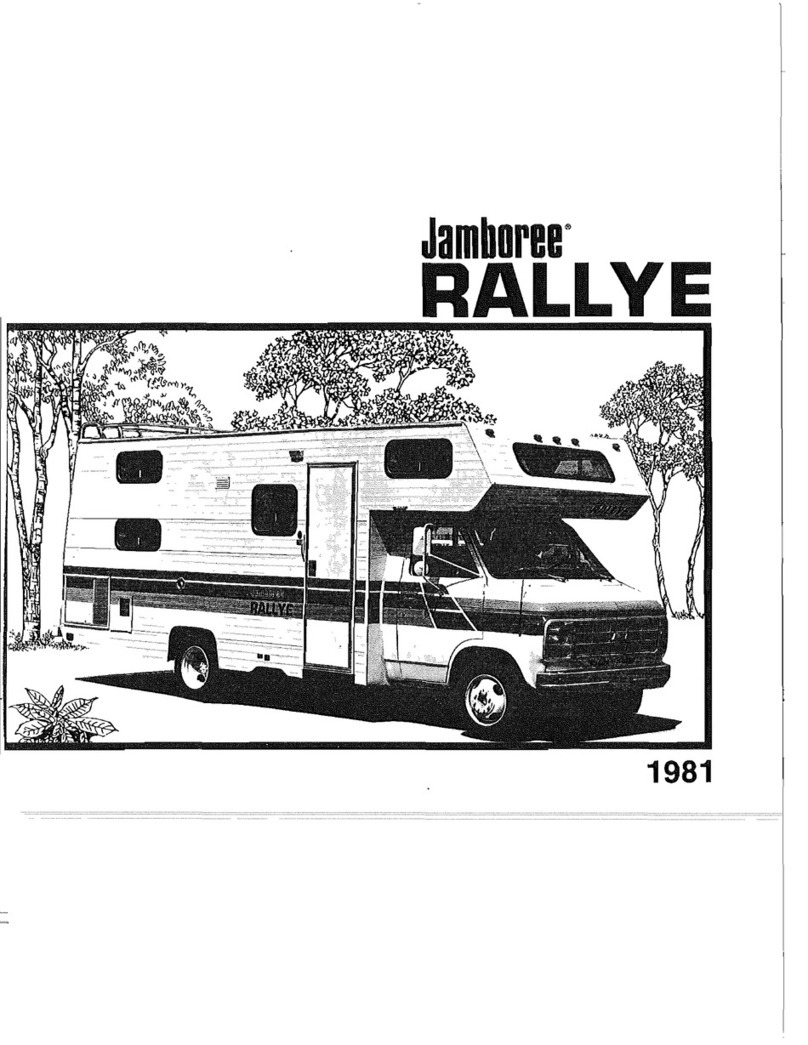
INTRODUCTION
Welcome to
the
recreational vehicle lifestyle and the
growing
family
of
motor
home owners.
We
sincerely
thank
you for choosing our product.
Your
motor home has been designed to provide you
with
many
years
of
carefree, pleasant traveling and
vacationing. This manual describes many features of
your
motor
home and provides a guide
to
operating
procedures so
that
you can obtain
the
best perfor-
mance from those features. Your
motor
home has
been designed
to
conform
with,
or exceed,
the
American National Standards
Institute
A119.2,
NFPA
501C, Canadian CSA Standard
Z-240
(Canadian-built"
or
units
built
for
Canada), and applicable
motor
vehi-
cle standards. These standards
establish
the
plumb-
ing, heating, electrical and
other
requirements for
quality
and safety. Compliance
with
these standards
is indicated by the seal attached
just
outside the entry
door. This seal is
the
outward
sign of internal quality.
Like all
finely
crafted equipment, your
motor
home
will
require care and regular maintenance in order
to
retain its
maximum
performance characteristics. This
manual, along
with
the
information
provided in your
Owner's
Information
Kit and Chassis Operator's
Manual outlines
important
areas
of
maintenance and
provides a maintenance schedule
that
you should
follow
to
ensure safe, trouble-free service
from
your
motor
home.
Study
these
instructions
carefully. A
good
working
knowledge
of
your
motor
home and
how
to
care
for
it
will
help you enjoy many miles and
years
of
recreational living.
The
motor
home has been
thoroughly
inspected
before shipment.
It
is
the
duty
of
your dealer
to
inspect
the
motor
home and
to
prepare
it
for
you dur-
ing
the
predelivery phase
of
the
sale.
YOUR DEALER IS RESPONSIBLE
FOR
PERFORM-
ING A COMPLETE PREDELIVERY INSPECTION
OF
THE CHASSIS
AND
ALL MOTOR HOME COM·
PONENTS AS SPECIFIED
IN
THE PREDELIVERY
CHECKLISTS SUPPLIED
BY
FLEETWOOD AND THE
CHASSIS MANUFACTURER.
YOU
SHOULD
RECEIVE
A COPY
OF
THESE COMPLETED CHECKLISTS
FROM
YOUR DEALER WHEN YOUR MOTOR HOME IS·
DELIVERED
TO
YOU.
He
will
instruct
you
in its basic use; however, sup-
plement
this
instruction
by
reading all instructional
material furnished
with
the motor home. If, after taking
delivery
of
your
new
motor
home, you feel
it
requires
additional
conditioning
or adjustment, please return
it
to
your dealer as soon
as
possible.
If
you have any questions regarding operation,
maintenance,
or
service, please
contact
your dealer
immediately
so he can assist you. Your dealer's
Service or Sales
Department
will
handle any normal
problem
which
might
occur. Customer service is
of
1
utmost
importance
to
your dealer, and is
just
as
important
to
the
manufacturer. Your
motor
home is
covered by one
of
the
most
comprehensive
warranty
programs in the industry. This manual contains a sec-
tion
outlining
the
warranty
and explaining your rights
and obligations, as well
as
the
rights and obligations
of
the
dealer and manufacturer, under
the
terms of
the
warranty. Please read
this
section carefully:
You
will
be
better
informed in case you have a
warranty-
related problem, and your dealer
will
be
better
able
to
get
you on
the
road again. If,
for
some reason, a
problem is
not
handled to your satisfaction:
1.
Discuss any warranty-related problems
directly
with
the
manager or
owner
of
the
dealership,
giving him an
opportunity
to
help his service
department
resolve
the
matter
for you.
2.
If
a problem arises
that
cannot
be
resolved
to
your satisfaction by your local dealer, contact the
factory
service manager. The factories are listed
in
this
manual. Please
contact
the
one nearest
you.
3.
We
sincerely believe
that
your dealer and
the
factory
representative
will
be
able
to
solve any
problem
which
might
arise.
If
their
combined
efforts
are
not
satisfactory, please send a
letter
describing
the
circumstances to:
Fleetwood Enterprises, Inc.
Consumer Affairs Department
P.
O.
Box
7300
Riverside,
Ca
92523
Please include
the
brand name and serial number
of
your
motor
home.
4.
If
you
wish
to
call for assistance, please use
these toll-free telephone numbers.
From California:
(800)
442-4804
From outside California: 1800)
854-4755
Thank you for choosing our product.
Your
dealer and
we,
the
manufacturer, will
continually
strive
to
merit
your confidence.
NOTE:
Some equipment and features described or
shown in this manual may
be
optional
on
some
models. This instructional manual is of general nature
only. Because of the continuous process
of
product
improvement conducted by Fleetwood
it
is possible
that recent product changes may not
be
included in
this manual. Specifications may change without
notice. This manual is accurate
as
of date
of
publica·
tion. The instructions included in this manual
are
intended
as
a guide,
and
in no respect extend the
responsibilities of the manufacturing subsidiary, parent
company or affiliates beyond the standard written war·
ranty
as
presented in this manual.






























